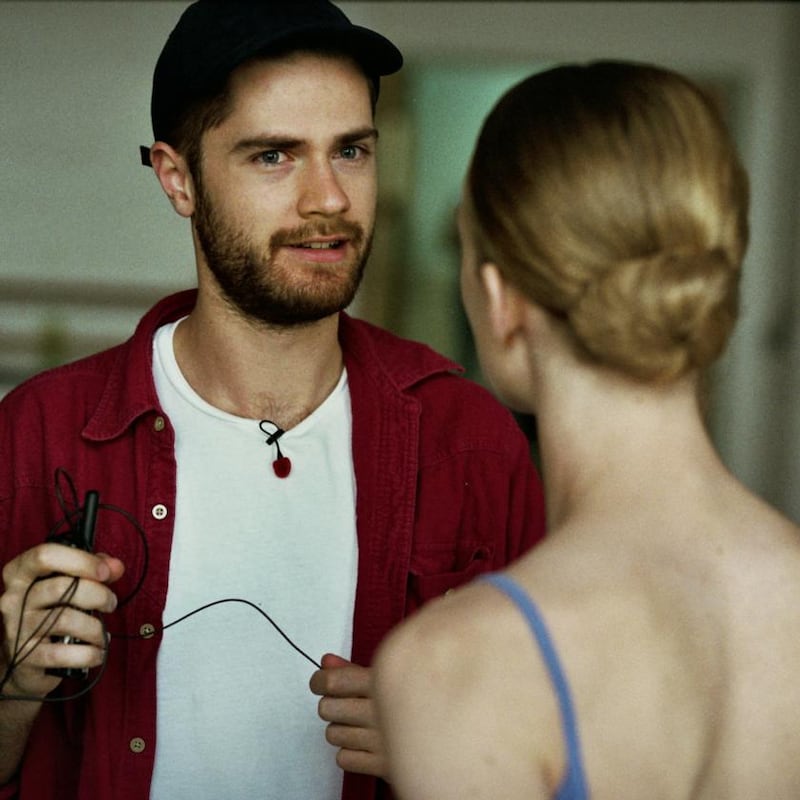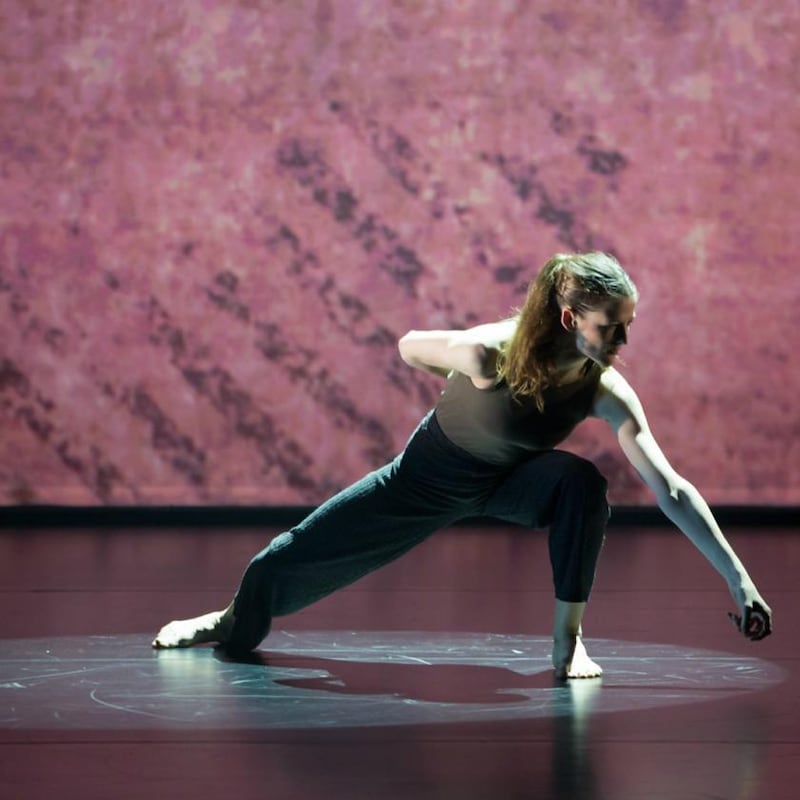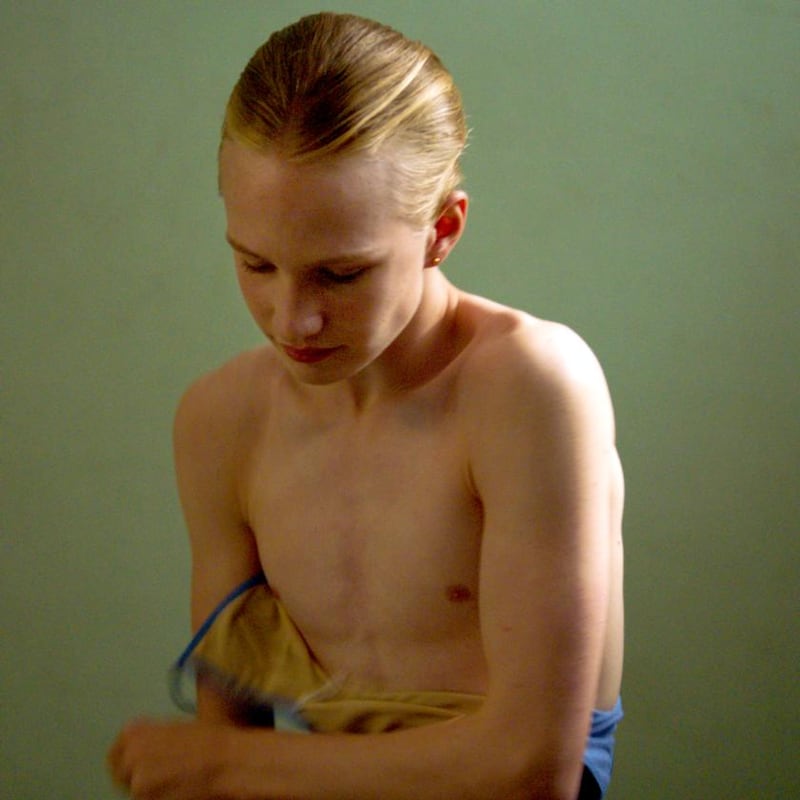There are few quicker ways to generate controversy than to address a transgender issue on film. Nobody has yet devised an approach that will satisfy all camps from all warring sides. Even before Lukas Dhont’s Girl won the Caméra d’Or – the prize for best first feature – at last year’s Cannes film festival, there were mutterings in the corridors.
Inspired by the life of Nora Monsecour, Belgian dancer and trans woman, the film follows Lara, a 15-year-old ballet student, as she prepares for sex-reassignment surgery. The film is rigorously researched. It is endlessly sensitive to its protagonist. But Victor Polster, the actor who plays Lara, is cisgender. Dhont was soon on the back foot.
You have to cast the person you fall in love with for the part. You have to cast the person who inhabits the role in a mature way
“Well, the answer to that question is a complex one,” he says. “We saw about 500 young people. We saw young trans people. But, as a director, at a certain point you have to cast the person you fall in love with for the part. You have to cast the person who inhabits the role in a mature way. And when Victor entered the classroom, I felt this was the person who could do that. And Nora very much felt the same way.”
An articulate man in his late 20s, Dhont has been over this territory many times since the Cannes premiere last May. The film has since had continued success. It also picked up the Queer Palm on la Croisette. Netflix bought it for US distribution. It was selected as the Belgian entrant for the foreign-language-feature Oscar and was deemed unlucky not to make the shortlist. It scored a Golden Globes nomination and powered Dhont to the Discovery Award at the European Film Awards. On each occasion he has had to explain further.
“It’s important to stress that there should be trans voices on screen,” he says. “We think it’s important that there is visibility. The ultimate goal is to evolve into a society in which those people can represent any role they want. That is what we want to evolve into.”
As the months progressed the conversations became more tightly and complexly knotted. There was much fury from some writers at what was seen as a focus on gender dysphoria and at the film's concern with the lead character's genitals. A piece by Mathew Rodriguez from Into magazine has been much quoted. "The film is bloody and obsessed with trans bodies in a way that reminds us that a cisgender person wrote and directed it. It's trans trauma porn," he wrote.
Dhont sounds a little weary at this line of attack.
“The film is a portrait of someone like Nora – who had a very particular relationship with her body,” he says. “Because she was a teenager. Because she was a dancer. It is a portrayal of her. It is not a portrayal of the whole community.”
Indeed, Nora Monsecour has expressed herself bewildered by the criticism.
“She is extremely proud of the film,” Dhont says. “She was there from the first letter on paper to the last shot on set.”

Monsecour – who competed in the BBC's Young Dancer series in 2017, while she was studying contemporary dance in England, and also has an association with Ireland, having spent time at Shawbrook dance centre, in Co Longford – was sufficiently taken aback by the controversy to write an article for the Hollywood Reporter defending Girl and its director. "We made a film with some hard, honest scenes," she wrote. "Scenes that might be disturbing to watch, but that are crucial to show. I do not want to sugar-coat my experiences or hide away my darkest thoughts. I shouldn't have to – they are real and not uncommon in the trans community."
For all the rows and all the talk of distressing scenes, Girl remains an impressively serious piece of work. The film talks us through the traumas that Monsecour endured and addresses the support systems that surrounded her. Films on such topics tend to have a lot to do with bigotry. There’s no easier way to charge up an audience than to show your likable protagonist being unfairly abused. There is some of that towards the beginning, but her dad is nothing but supportive, the counsellors are understanding and the health services are sensitive. This is not how script doctors advise film-makers to work. Where are the antagonists?
“Ballet [is] a world that is about roles for men and women. It is a very binary world,” Dhont says. “So there is a real conflict there for her. We didn’t really need an enemy. We thought it was important to have her making her way in that world. That seemed better than her having these concrete enemies.”
And is Belgium really such an accommodating place for trans people?
"The university hospital in Ghent is one of the two front runners in Europe when it comes to the medical and psychological treatment of trans people. So we have come very far in that sense."

The son of a mother who teaches fashion and a dad who is “what we would call a businessman”, Dhont is a graduate of the KASK art academy in Ghent. He released a few acclaimed short films and pop videos before happening upon Nora Monsecour’s extraordinary story. His first idea was to have his subject on screen, but she was uncomfortable with the idea, and the tricky search for an actor began. He needed somebody who could handle the gruelling dance sequences and also convincingly represent someone undergoing sex reassignment.
“Yeah, it was a challenge in bringing the dance to screen,” he says. “Dance has a physical effect on people, and you want that effect felt on film. The effect of dance on the body rather than the dance itself was [what was] important to us. And we were all looking in the same direction. So that helped.”
It’s hard to overestimate what it means for a first-time film-maker to land in the official selection at Cannes. You initially expect to premiere before your mum, dad and a few pals. You fill out the Cannes forms more in hope than expectation. A few months later your film unveils before 1,000 attendees at the Un Certain Regard section. Winning the Caméra d’Or was something else again.
"I think we were surprised," he says. "We believed in this since the idea came to us in 2009. So we had been working on it for a long time. But in Cannes we soon realised that people were connecting with it in an overwhelming way. Winning the Caméra d'Or was an amazing thing. Ending up in the same category as Jim Jarmusch and Steve McQueen was something else."

If there is a downside to the attention it is that people suddenly care what you think. The question of whether directors, when casting characters from certain minority groups, should always hire actors from those minorities remains fiercely contested. The argument about race is over. The argument about disability is fractious. The argument about gender is just getting going.
“First of all, race and gender are completely different,” he says. “That’s a completely different argument. I feel that a lot of people who are looking at it from afar forget to talk about nuances. We agree that gender is something fluid, and in that sense there are very different questions as regards casting.”
I make films because I am interested in human beings. I see cinema as a bridge. I will always be interested in getting to know characters
Dhont seems awfully sure of himself for a man who has yet to reach 30. Terrifyingly so.
“I make films because I am interested in human beings. I see cinema as a bridge,” he says. “I will always be interested in getting to know characters.”
Dhont now heads off to make something in “an entirely different genre”. Girl will be available in US homes via Netflix. It will surely generate acclaim and controversy in equal measure when it moves into our cinemas next week. I wonder if it was a hard film to finance.
“I would like to tell you that it was hard to finance,” he says with a laugh. “That would make me more of a hero. It was not.”
Honest fellow.
Girl opens on Friday
FIVE WINNERS OF THE CAMÉRA D’OR
The award for best first feature at Cannes has an honourable history.
Jim Jarmusch (1984)
It's hard to imagine a world without Jim Jarmusch. He won for Stranger Than Paradise and has dutifully returned to the festival many times.
Mira Nair (1988)
The Caméra d'Or has a better record for awarding women than does the Palme. Mira Nair's Salaam Bombay! was a sensation.
Jafar Panahi (1995)
Jafar Panahi's success with family film The White Balloon launched one of the great Iranian directors. Recently much in dispute with the authorities at home.
Steve McQueen (2008)
Steve McQueen's Hunger was the only plausible winner when it played Un Certain Regard in 2008.
Benh Zeitlin (2012)
Hey, what happened to Benh Zeitlin after winning for Beasts of the Southern Wild? He may return to Cannes in May with the science-fiction mystery Wendy.



















